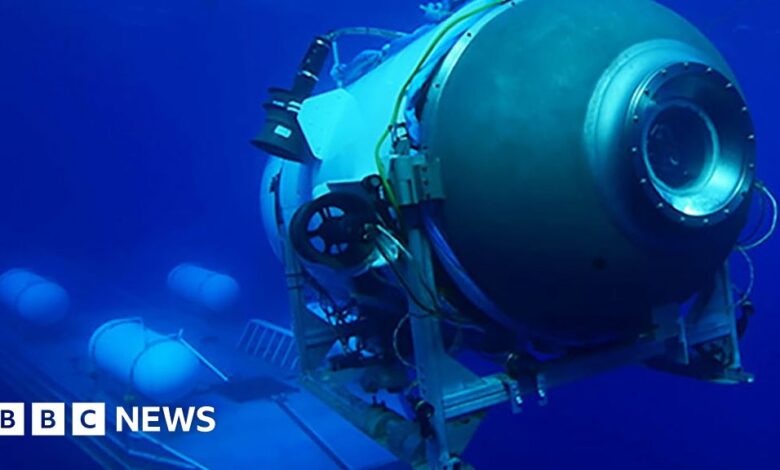How did the Titan’s hull split apart? Safety experts weigh in

OceanGate’s analysis of the wreck of the Titan submarine has revealed how the hull came apart.
Images of the ship’s wreckage scattered across the seabed show the carbon-fiber hull has split into multiple layers – a known problem with the material.
Evidence was presented to the US Coast Guard on Wednesday at a public hearing into the submarine’s tragic incident in June 2023, which killed all five people on board.
It has not yet been confirmed whether the hull was the first part of the submarine to fail, but details suggest it is the main focus of the investigation.
Investigators are trying to shed light on the cause of the tragedy and make recommendations that could prevent future deadly trips.
The Titan, operated by OceanGate, exploded less than two hours after landing on the Titanic wreckage.
The Titan’s hull is made from multiple layers of carbon fiber mixed with resin.
This is a very unusual material for a deep-sea submarine because it is unreliable under pressure – most submarines are made from metals like titanium.
Don Kramer, an engineer at the National Transportation Safety Board, showed the U.S. Coast Guard a series of images of parts of the ship’s hull on the seabed.
He describes how the carbon fiber layers separate from each other in some fragments — a process known as delamination.
In other places, the material cracked.
It is not yet confirmed whether damage to the ship’s hull caused the explosion.
“I am not making any analysis at this point as to whether [the damage] happened before or after the explosion,” he said.
Mr. Kramer also described how his team analyzed samples of the Titan’s hull that were left over after construction. They looked at leftover parts from when the submarine was built.
He described that the specimens showed areas where the carbon fiber layers had separated, as well as wrinkles, voids and gaps.
Any irregularities in the material will affect the hull’s performance under extreme underwater pressure.
The US Coast Guard was also informed that a loud explosion heard during a dive a year before the disaster may have damaged the submarine’s structure.
Passengers reported the incident as the submarine was returning to the surface after a dive to the Titanic in 2022. One passenger described it as an “alarming acoustic event” when giving evidence last week.
At the time, OceanGate CEO Stockton Rush said he thought it was the sound of the submarine shifting within the metal frame surrounding it.
But a new analysis of sensor data by the National Transportation Safety Board suggests the noise signals some changes in the ship’s hull structure.
This may have changed the way the submarine responded to pressure at depth.
Mr Kramer pointed out other problems with the submarine’s design, including observation windows that were not rated to dive to the same depth as the Titanic and the unusual shape of the hull that caused pressure to be unevenly distributed.




